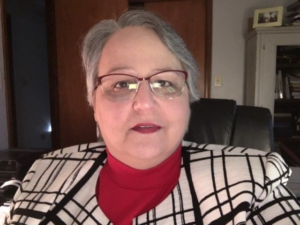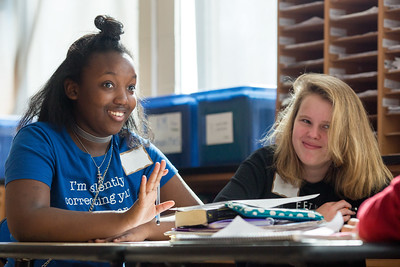Now and then, a small change in instructional strategies can bring about a huge change in student learning. Number talks seem to be one of those subtle yet powerful changes.
A relatively recent phenomenon, number talks are a valuable classroom routine that promotes mathematical reasoning. They ask students to solve problems by using mental math, making sense of numbers and math, and developing/inventing efficient computation strategies.

Number talks help students understand relationships between numbers and operations through composing/decomposing numbers, compensating and expanding, applying properties of operations and more. Number talks also increase flexibility with computational strategies thereby improving computational fluency.
This strategy turns students into active learners, empowering them to create their own approach to problem-solving. It builds computational fluency and concept development. Learning each other’s varied approaches to the same problem lets students consider the many different ways to get to the right answer.
How to start
Number talks can be used on a daily basis for about five to 10 minutes. They should not replace core, whole-group instruction.
Prior to a number talk, the teacher explains that the main goal is using mental math to come up with a variety of answers. It is important that a teacher develops a signal for their students to use when they have an answer, such as a thumbs-up under their chin or one finger on their nose. The quiet, nondistracting signals allow all students the time they need to think of their own answer.
Students generally adapt to this process quickly.
Dive into the problem

Next, the teacher writes the problem on the board where all students can see and refer back when needed. The students begin solving the problem, using solely mental math to find a solution.
Once they have their answer, they give their “I’m ready” sign to the teacher. It is important for the teacher to give ample time for all students to solve the problem. When some students finish early, the teacher can remind them to brainstorm another way to solve the problem.
When all students have given a signal, the teacher calls on one to share their answer and — the important part — how they came up with the answer. Prompts such as “How did you know that?”, “What did you do next?”, or “Tell me what you were thinking” help them articulate their reasoning in-depth, offering the teacher and other students insight into one way to solve problems.
During this talk, the teacher should be writing down the student’s thought process on the board so everyone can follow along with the sharer’s thinking — but neither indicate whether the answer is right nor comment on the steps taken.
The teacher can tell students to put their hand on their head as a “me too” if they came up with the same answer the same way as the first student. That allows a quick glance to see who else had that answer using the same method. Next, a student with a different approach can be selected to share their answer and thought process, and so on.
Embracing different views
Number talks are an effective and efficient strategy for promoting mathematical reasoning in the classroom. It shows that not all people think the same way and reveals different perspectives for solving future problems.
Number talks also allow the teacher to gain a deeper understanding of a student’s cognitive ability.
Finally, it encourages students to talk about math by sharing their answers and process, because they know that even if the answer isn’t right, their reasoning means their answer is valid. That nudge to embrace trial and error can turn hesitant students into future mathematicians.
Carol Buckley is an associate professor of mathematics at Messiah University in Pennsylvania. Madison Meeks is a junior at Messiah University studying elementary education with a minor in the teaching of English to speakers of other languages.
________________________________
If you liked this article, sign up for SmartBrief’s free email newsletter on EdTech. It’s among SmartBrief’s more than 250 industry-focused newsletters.
More from SmartBrief Education:
- 5 ways new school-home communication meets family, staff needs
- 5 virtual-classroom tools to foster authentic connections
- Changing the classroom experience with instructional audio
- Powerful social media solutions for students
- How comics curriculum boosts SEL
- 8 ways to make vocabulary instruction more effective
